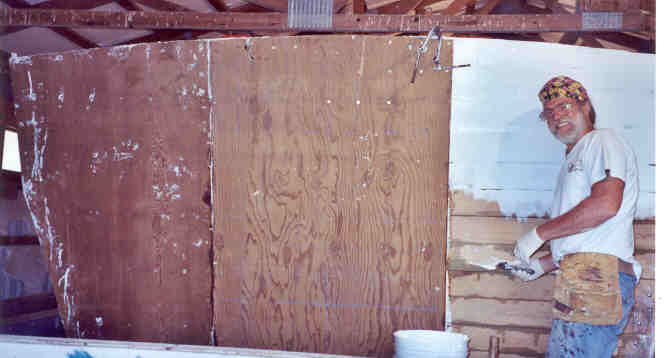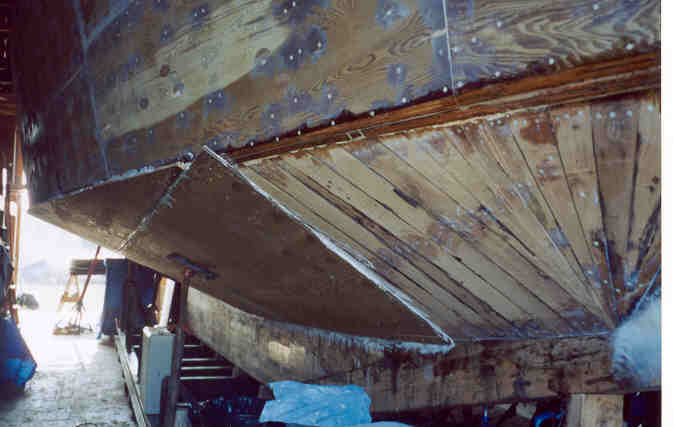Page 4: Building a 48′ wood Duck
This boat is “Composite Planked,” using an outer layer of 3/8″. Some people use two layers but in this case we have a 1 1/2″ planked inner layer so only one of plywood is needed. As written elsewhere (read my BuildingBook!) this is a simple way to make wood hulls.
A pattern of the hull area a plywood sheet will cover is made from 3″ wide strips of “door skin.” This makes cutting the plywood much simpler. There’s other systems but I like actual patterns. I use a heavy stapler rather than a glue gun to hold the strips.
Harry spreads the “Goop” (I don’t know what this white stuff is) on both the planks, and the plywood sheet.
…..Then nails the sheet to the hull. Note the handles attached to the ply to make it easier to position.I’d attach the ply with ceramic or coated “deck screws”or even galvanized nails. The deck screws are probably better.
The transom getting covered. And Harry looks cheerful as he starts to see the end of it!
The sides are done and the bottom is getting there. Note the “cross-planked” bottom. As The BuildingBook describes, this is a very simple way to build chine wood hulls. Harry’s fanning at the bow shows the planks angled forward.The reason is that as the keel rabbet approaches the bow, there could be quite a bit of twist required to fit the plank. Cutting them triangular and laying them however they want to go solves that one. This is called “Planking a la Maryland” andI know looks very weird to people not familiar with it. But it has been a traditional and respected way of planking since before the Indians moved to the Chesapeake.




